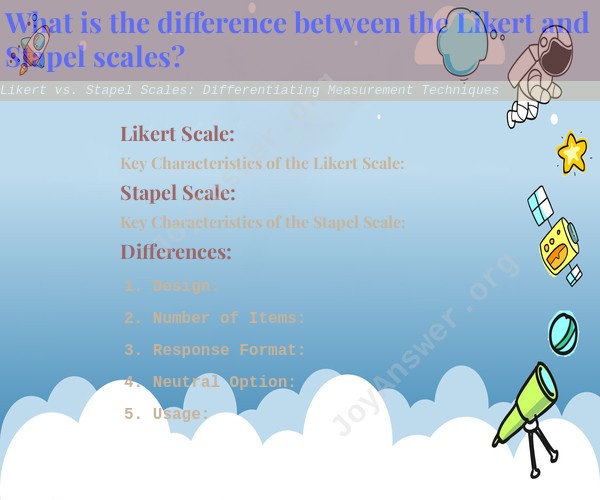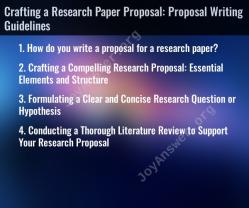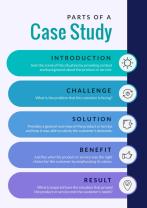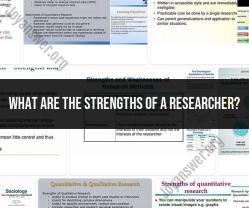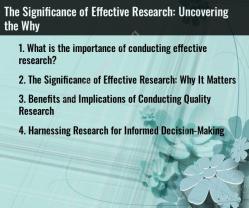What is the difference between the Likert and Stapel scales?
Likert Scale:
The Likert scale is one of the most widely used methods for measuring attitudes and opinions. It involves presenting a series of statements or items related to the topic of interest. Respondents are asked to indicate their level of agreement or disagreement with each statement using a predefined scale, typically ranging from "Strongly Disagree" to "Strongly Agree." The Likert scale allows for nuanced responses and captures the intensity of attitudes.
Key Characteristics of the Likert Scale:
- Uses a set of statements or items.
- Typically includes an odd number of response options.
- Provides a range of response choices to measure agreement or disagreement.
- Responses are usually measured on a five- or seven-point scale.
Stapel Scale:
The Stapel scale is another method for measuring attitudes or opinions. It involves presenting a single adjective or term that represents an attitude or opinion. Respondents are asked to indicate their level of agreement or disagreement with the adjective using a numerical scale, which is often placed next to the adjective. Unlike the Likert scale, which uses multiple statements, the Stapel scale uses a single term for each item.
Key Characteristics of the Stapel Scale:
- Uses single adjectives or terms.
- Typically includes a vertical numerical scale next to the adjective.
- Provides a range of response choices to measure agreement or disagreement.
- Responses are usually measured on a positive-to-negative scale, without a neutral option.
Differences:
1. Design: The Likert scale presents a series of statements, while the Stapel scale uses single adjectives or terms.
2. Number of Items: The Likert scale includes multiple items or statements for respondents to rate, while the Stapel scale uses one adjective per item.
3. Response Format: The Likert scale provides a set of response options (e.g., Strongly Disagree to Strongly Agree), whereas the Stapel scale includes a numerical scale (often ranging from -5 to +5) next to the adjective.
4. Neutral Option: The Likert scale typically includes a neutral response option (e.g., Neither Agree nor Disagree), while the Stapel scale does not include a neutral option.
5. Usage: The Likert scale is more commonly used and provides more detailed insights into respondents' attitudes due to the multiple statements. The Stapel scale is less common but offers a quick way to gather opinions on a single aspect.
